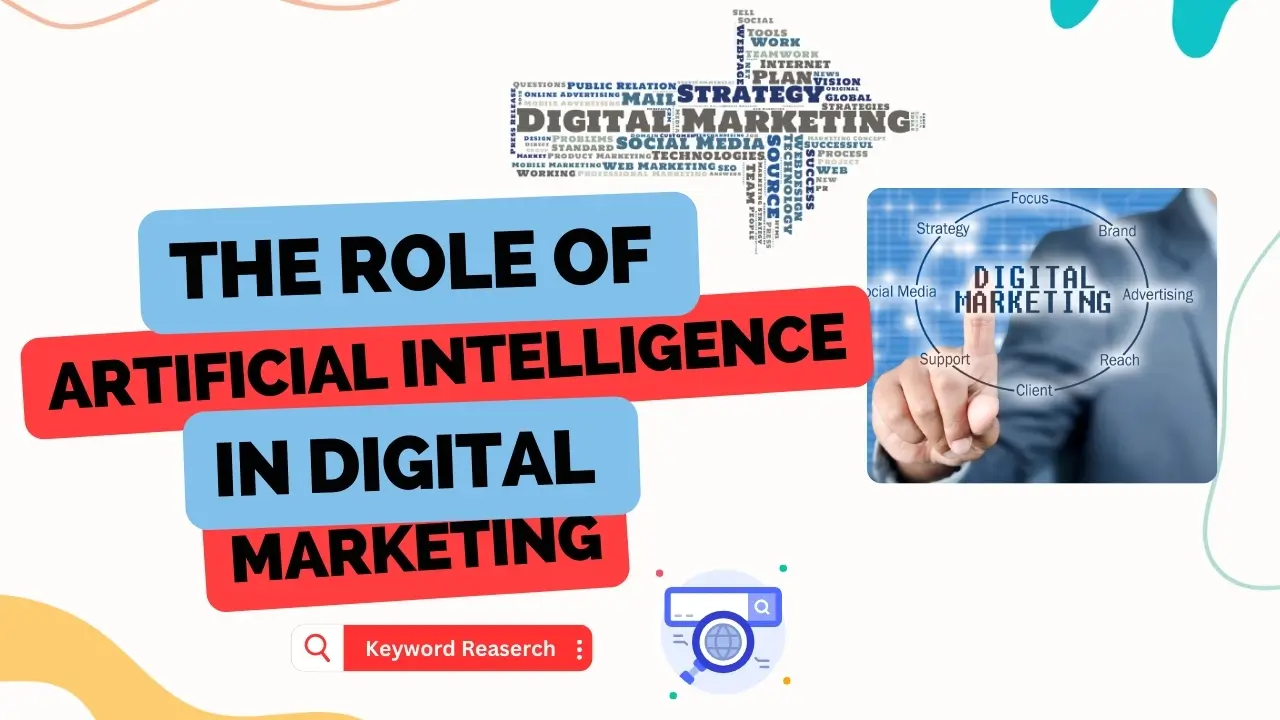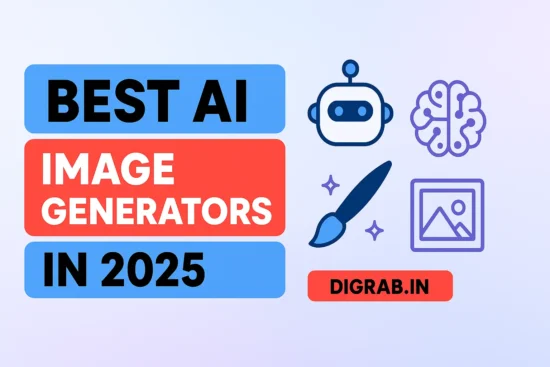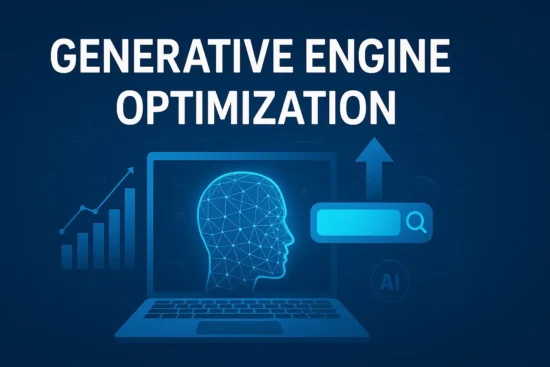
Recent data shows that 88% of marketers know the role of artificial intelligence in digital marketing to stay competitive. Yet 37% still don’t have an AI strategy. This gap shows a significant disconnect in how businesses deal with AI technology today.
Most marketing leaders understand AI’s capabilities, but many don’t grasp its actual role of artificial intelligence in digital marketing. AI will power 45% of the total global economy by 2030, which makes it vital for marketers to understand it properly. Sephora’s success proves this point perfectly – the company grew its e-commerce sales from $580 million to over $3 billion by creating AI-powered customer experiences.
This piece will help you understand why marketers often misread AI’s role and what it can really do for marketing decisions. You’ll find practical ways to add AI to your digital marketing strategy effectively. We want to help you see past the buzz and learn how to use AI’s capabilities in meaningful ways.
The AI Hype Cycle: Why Marketers Misunderstand Artificial Intelligence
AI represents a seductive promise of revolutionary change for many digital marketers. The quick rise of AI technologies has created a big gap between what marketers believe AI can do and what it actually delivers. Gartner’s Hype Cycle for Artificial Intelligence shows marketing AI sits in the “trough of disillusionment” – that tough phase where original excitement fades as reality sets in.
The ‘AI Will Solve Everything’ Fallacy
Marketers’ most persistent misconception about AI is their belief that it works as a magical solution for every marketing challenge. This misconception comes from exaggerated vendor claims and general market hype about AI’s capabilities. Research shows 90% of marketing professionals now use AI tools to automate customer interactions, yet many use these tools without fully understanding their limitations.
This overly optimistic view leads to several problems:
- Strategic misalignment: Organizations invest in AI without clear objectives or use cases
- Budget misallocation: Resources spent on advanced AI solutions that don’t address fundamental business needs
- Unrealistic performance expectations: Disappointment when AI doesn’t deliver imagined capabilities
“AI is not a magic solution,” notes one industry expert. “It is good only if data quality and human guidance are adhered to”. Marketing teams often find this truth only after major investment and learn that AI boosts rather than replaces human creativity and strategic thinking.
Confusing Automation with Intelligence
Marketing teams’ most basic misunderstanding happens when they mix up simple automation with genuine intelligence. People use the terms “artificial intelligence” and “automation” interchangeably, yet they mean completely different things.
Traditional automation runs predefined tasks based on explicit rules – basically “if this, then that” logic. True AI adds adaptability and learning capabilities to marketing processes. This difference matters greatly for implementation:
- Automation follows fixed rules without adapting to new circumstances
- Intelligence learns from data patterns and improves over time
- Hybrid systems combine rule-based automation with adaptive AI capabilities
One report explains: “While automation focuses on executing predefined tasks, AI brings a new level of intelligence and adaptability to the table”. Organizations that miss this difference often use simple automation tools while expecting sophisticated capabilities of true machine learning systems.
Unrealistic Expectations vs. Current Capabilities
A gap exists between expectations and reality that creates major friction in AI marketing implementations. Business leaders expect immediate, transformative results from AI adoption, while actual benefits emerge gradually as systems learn and improve.
Common expectation misalignments include:
- Implementation timeline: Expecting immediate results when AI needs proper setup and training
- Human involvement: Believing AI will handle entire marketing workflows by itself
- Content quality: Assuming AI-generated content matches human creativity without oversight
One analysis points out, “AI doesn’t bring instant results. It takes time to get outcomes”. Organizations often underestimate the resources needed for successful AI implementation, especially regarding data preparation and ongoing system maintenance.
AI truly boosts marketing when teams understand and implement it properly. The 88% of marketers who say AI has helped them personalize customer experiences represent organizations that have moved beyond the hype cycle to real-life application.
Success comes from understanding the Role of Artificial Intelligence : not as a replacement for human marketers but as a powerful tool that amplifies their capabilities through data analysis, pattern recognition, and task automation. This viewpoint change—from AI as magic solution to AI as strategic marketing tool—makes the difference between disappointment and genuine competitive advantage.
Common AI Implementation Mistakes in Digital Marketing
Organizations keep putting more money into artificial intelligence, yet many still hit roadblocks when they try to use AI in their digital marketing. Companies raise their AI budgets by 8.3% each year. Still, too many make basic mistakes that hurt their investment returns. Marketers need to learn about these pitfalls to properly use artificial intelligence in digital marketing.

Implementing AI Without Clear Objectives
Many companies rush to adopt artificial intelligence in digital marketing and make a crucial mistake. They start using AI solutions without knowing what they want to achieve. Marketing leaders and stakeholders must arrange well-defined goals before they add AI to their toolkit. The original planning stage should spot specific problems and lay out how AI can boost marketing practices over time.
Companies that don’t set clear objectives face these issues:
- They waste resources on tools that don’t fix core business problems
- Stakeholders lose faith in AI’s worth when they don’t see results
- Teams don’t deal very well with measuring success without set standards
“Without a clear AI marketing strategy, it’s easy to fall into the trap of using AI haphazardly, resulting in missed opportunities or suboptimal outcomes”. Companies should move past the “tool-driven” mindset that sees AI as the answer to everything. A “problem-driven” approach works better. It reviews each business challenge to see if AI really offers the best solution.
Neglecting Data Quality Requirements
Bad data quality hurts AI effectiveness more than most marketers realize. Andrew Ng, Professor at Stanford University, puts it clearly: “If 80 percent of our work is data preparation, then ensuring data quality is the most critical task for a machine learning team”.
AI marketing tools can only succeed based on the accuracy and relevance of their training data. Tools trained on bad data can’t give useful insights or valuable suggestions. Poor data quality shows up in several key ways:
- Inaccurate data guides wrong decisions and can cause harmful results
- Inconsistent data creates confusion and wrong interpretations
- Incomplete datasets prevent AI algorithms from spotting key patterns
- Outdated information produces irrelevant outputs
Companies must spend time collecting, cleaning, and organizing their data before using AI tools. This preparation makes sure the data stays relevant, current, and truly shows what the target audience wants.
Choosing Tools Before Strategy
Companies often pick AI tools before creating a detailed strategy. Almost half start their AI trip by selecting specific vendors or technologies instead of developing a clear plan. This approach usually leads to poor investments that don’t help overall business growth goals.
“The enterprise AI landscape is vast, with a wide range of tools and platforms on the market”. The selection process needs careful review of factors like ease of use, scalability, and how well it works with existing systems. Companies that follow proper planning steps—setting clear goals, checking data quality, and getting stakeholders on board—find it easier to pick the right tool.
Marketing teams should take these steps to avoid common mistakes:
- Begin with their current growth plan
- Get a full picture of available resources through data audits
- Get support from executives
- Let teams try different use cases
- Give proper training to boost adoption
Success with AI in marketing comes from seeing it as part of a comprehensive strategy, not a standalone fix. Companies that take a methodical approach—starting with clear goals, ensuring good data quality, and matching tools to strategy—set themselves up to get the most from AI in their digital marketing work.
The Role of Artificial Intelligence in Digital Marketing Decision
Marketing professionals now know that AI’s real value comes from making human decisions better, not replacing them. Research shows 56% of companies already use AI in their strategic marketing decisions. This shows a quick change in how businesses use this technology to make decisions.

AI as Insight Generator, Not Decision Replacement
AI’s strength in marketing comes from knowing how to process huge amounts of data, find meaningful insights, and help make informed decisions. AI can analyze millions of data points in real-time, unlike traditional analytics. It finds patterns and connections that humans could never spot on their own. This changes how marketers understand their audiences and markets.
Research shows marketing professionals want AI to support their decisions, not take over. Marketing leaders would give smart algorithms about 43% weight in future decisions, leaving 57% to human judgment. This shows a significant point: AI works best when it generates insights to inform human decisions rather than making them alone.
Augmentation vs. Automation: Finding the Balance
Marketing strategies need a clear difference between AI augmentation and automation:
- Automation follows preset rules to complete tasks without adapting
- Augmentation uses AI tools that learn and get better over time to improve human abilities
- Collaborative AI works with humans by giving recommendations while humans stay in control
Most marketing professionals today call AI an “assistant” that handles certain decision-support tasks. Yet 46% want AI to become a “collaborator” that manages parts of decision-making while staying connected with human decision-makers.
Organizations find that AI performs best when it goes together with human creativity and judgment. The most successful companies use AI as a tool to improve marketers’ abilities instead of replacing them. Yes, it is true that businesses using generative AI will likely grow revenue 2.5x faster and be 2.4x more productive than others.
Case Study: How Netflix Uses AI to Inform (Not Replace) Creative Decisions
Netflix shows perfectly role of artificial intelligence inform creative marketing decisions without taking over. Their recommendation system looks at what people watch, how they rate shows, what they search for, and how long they watch. This creates personalized content suggestions. The system works well – about 75% of what Netflix viewers watch comes from these AI-powered recommendations.
Netflix also uses AI to pick the best thumbnails. The system looks through thousands of video frames to find ones that viewers will likely click on. These thumbnails match similar users’ clicking patterns, making even small parts of the experience personal.
Netflix keeps humans in charge of creative work. Take “House of Cards” – they used AI to study what viewers like but relied on human creativity to make ten different trailers for different audience groups. This mix of AI insights and human creativity shows the perfect balance between technology and marketing expertise.
This approach proves that good AI marketing needs to see artificial intelligence as a powerful tool that makes human abilities better through data analysis, pattern spotting, and personalization. Marketers can now focus more on customers and meet their needs right away. They quickly figure out what content to show customers and which channels to use at the right time.
Data Requirements: What Marketers Overlook About AI
Quality data is the backbone of every successful AI marketing tool, but many organizations miss this crucial point. IBM research confirms that “AI-driven solutions are only as strong as the quality of the data they are trained on”. Marketers face several hidden challenges when they use artificial intelligence in their digital marketing strategies.

The Volume-Quality Paradox in Training Data
Many people believe that more data automatically means better results in AI. Of course, volume plays a role—”the more data you can feed into your AI tool, the stronger the output”. This creates a dangerous balance. Organizations rush to collect huge datasets but often forget how bad data can ruin their AI’s effectiveness.
This tension between volume and quality plays out in several ways:
- Bad data creates wrong insights and poor decisions
- AI models make small errors and biases much worse
- Companies struggle to maintain quality while chasing more data
Marketers should avoid the trap of collecting data without checking its accuracy. “For AI to produce excellent output, high-quality input is required”. Companies using AI in marketing need both enough data and good quality data—a balance that proves tricky for many.
Hidden Costs of Data Preparation
Data preparation costs catch many marketing teams off guard. Beyond the obvious price of AI platforms, teams face several hidden expenses:
Data cleaning and standardization needs substantial investment. Companies must take time “to standardize and clean their datasets to help ensure accuracy and efficiency” before they see results from their AI investment.
Expert talent adds another unexpected cost. Complex AI systems “requires significant internal resources, including the right tools and skilled personnel”. Marketing teams need “data scientists who specialize in doing this training”, and these experts don’t come cheap in today’s market.
Time becomes a major expense in data preparation. Getting and preparing your own data “can be a lengthy process, particularly when it requires manual labeling for AI training”. This longer timeline pushes back implementation and ROI, putting pressure on marketing budgets.
Building Sustainable Data Infrastructure
Long-term success with AI in digital marketing needs more than just good implementation. “Implementing robust data pipelines and cloud-based infrastructure allows for real-time data processing, enabling AI to deliver accurate insights”.
Environmental impact matters in infrastructure planning. The global AI infrastructure market will grow 44% annually over the next six years. Companies can “minimize the environmental impact of AI while achieving business objectives by prioritizing model efficiency”. Using renewable energy for data centers helps too.
Good infrastructure helps data flow between platforms. “The Role of Artificial Intelligence is reliant on moving data seamlessly across systems”. Most organizations “try to ensure data integration across all platforms and systems, including CRM software, website analytics and sales platforms” to get the most from their AI.
Understanding these data requirements helps marketers use AI better in their digital marketing strategies. Companies that focus on data quality, plan for preparation costs, and build strong infrastructure will get AI’s benefits while avoiding its hidden problems.
Human-AI Collaboration: The Missing Element in Marketing
The partnership between humans and artificial intelligence is a key factor that many companies miss when implementing marketing strategies. Companies that know how to blend human and AI capabilities have improved their productivity by up to 40% in specific areas. Many businesses still struggle to find the right balance.
Defining Human vs. Machine Responsibilities
The success of AI integration depends on clear boundaries, highlighting the Role of Artificial Intelligence in balancing automation and human expertise. AI excels at processing vast amounts of data, identifying patterns, and performing repetitive tasks with precision. Meanwhile, humans contribute irreplaceable qualities such as creativity, emotional intelligence, and nuanced judgment. By leveraging AI for efficiency while preserving human insight, businesses can achieve optimal results in marketing and customer engagement.

To divide responsibilities effectively:
- AI handles: Data processing, audience segmentation, performance analytics, and routine tasks
- Humans manage: Strategic decision-making, creative ideation, emotional connections, and cultural nuance
Research from Harvard Business Review looking at 1,500 companies found that teams perform best when humans and AI work together cooperatively instead of separately. Setting up “human-in-the-loop” systems will give ethical oversight and strategic direction to AI operations.
“While AI can handle data-heavy tasks, humans focus on the strategic and creative elements that make a campaign memorable”. This teamwork approach lets both sides shine – machines bring efficiency and scale, while humans add the emotional intelligence needed to make marketing authentic.
Skills Marketers Need in the AI Era
The digital world keeps changing with AI, and marketers need specific skills to succeed. These abilities stand out as most important:
- Data analysis proficiency: Learning about customer data helps marketers create campaigns that work
- AI tools knowledge: Understanding AI platforms helps marketers save time and energy
- Content creation abilities: Using AI as a helper for ideas and drafts while keeping human creativity
- Soft skills mastery: Building empathy, communication, accountability, and innovative thinking
- Ethical AI understanding: Being transparent about AI use and data collection
Right now, 60% of leaders think data security skills and 58% believe ethical skills will become crucial as AI grows. Many organizations face skill gaps that slow down AI adoption—63% of employers say this is their biggest challenge.
Creating Effective Feedback Loops Between Teams and AI Systems
Teams often overlook how to create effective feedback loops between people and AI systems. These loops help both humans and algorithms learn from experience and keep improving.
Feedback loops work through a cycle where teams collect, analyze, and use AI outputs to improve or retrain systems. This helps AI systems spot mistakes and fix them in future runs.
Organizations should follow these steps:
- Set clear rules to review AI decisions
- Let marketers flag wrong or problematic outputs
- Use corrected data to retrain systems
- Watch for market changes that might need algorithm updates
The system gets better over time—”as a firm gathers more customer data, it can feed that data into machine learning algorithms to improve its product or service, thereby attracting more customers, generating even more customer data”. This creates a positive cycle where marketing AI becomes more effective.
Success belongs to companies that master this teamwork—not those picking between human creativity and AI analysis, but those who learn to use both together for maximum results.
Ethical Considerations Beyond Privacy Compliance
Ethical questions about artificial intelligence in digital marketing go way beyond simple compliance with privacy regulations. Research shows that 79% of Americans worry about how companies use their data. This highlights why marketers need to think over deeper ethical issues in their AI strategies.
Addressing Algorithmic Bias in Marketing AI
The Role of Artificial Intelligence in marketing brings both opportunities and challenges, with algorithmic bias standing as one of the most important ethical concerns. Biased data can make AI-driven algorithms unintentionally favor or disadvantage specific demographic groups. Research reveals these systems might worsen social and economic gaps, especially when dealing with demographic characteristics like race. This happens because AI algorithms often use proxies like zip code or browsing history to target people, which can lead to discriminatory outcomes even without intent. Ensuring fairness and transparency in AI-driven marketing is crucial to mitigating these biases.
Organizations should take these steps to deal with algorithmic bias in marketing AI:
- Ensure data diversity in training sets to avoid under-representation of certain groups
- Implement regular bias audits to spot and alleviate potential discrimination
- Create cross-functional teams with diverse backgrounds to add multiple points of view during development
- Develop bias impact statements that look ahead at negative outcomes for protected groups
The Brookings Institution research explains that “surfacing and responding to algorithmic bias upfront can potentially avert harmful impacts to users and heavy liabilities against the operators and creators of algorithms”.
Transparency in AI-Driven Customer Interactions

Trust in AI starts with transparency. Customers who understand how AI systems make decisions are more likely to trust both the system and the brand. About 92% of consumers say they trust brands more when they clearly explain their data usage practices.
Explainable AI (XAI) offers a good solution by giving clear, understandable explanations for AI decisions. This transparency boils down to accountability—knowing how to audit systems, understand reasoning, and arrange everything with ethical principles. These findings suggest marketers should focus on building AI systems that explain their decision-making clearly, especially during critical interactions.
Unlike traditional “black box” approaches, transparent AI helps users understand how recommendations work, which reduces doubt and increases adoption. This clarity matters more as AI takes on bigger roles in marketing decisions.
Balancing Personalization and Manipulation
The trickiest ethical challenge involves finding the right balance between helpful personalization and potential manipulation. AI enables individual-specific experiences but might also exploit psychological vulnerabilities for commercial gain.
Companies must create internal guidelines that put ethics first in marketing applications. Studies show that “personalization and privacy are often seen as opposing forces, but they don’t have to be. The key lies in transparent communication and the ethical use of AI”.
Marketers should follow these steps to find this balance:
- Provide easy-to-understand consent options regarding data usage
- Allow users to customize their AI-driven experiences
- Ensure a mix of personalized and exploratory content to counteract filter bubbles
- Regularly assess whether AI systems potentially favor certain demographics or exclude others
Marketers must tackle these ethical aspects in their AI implementation strategies. Otherwise, they risk not just regulatory consequences but also losing consumer trust—a vital asset in an increasingly AI-driven marketing world.
Measuring AI Marketing ROI: Beyond the Vanity Metrics
Companies need better ways than traditional metrics to evaluate artificial intelligence’s success in digital marketing. A global study reveals that organizations see returns from AI investments within 14 months. The average returns amount to INR 295.33 for every INR 84.38 invested. The accuracy of ROI measurement directly affects how companies use AI in their marketing strategies.
Establishing Meaningful KPIs for AI Initiatives
Marketing teams should start with a clear strategy to create AI success metrics. The team must set project objectives, identify affected roles, and choose KPIs that measure success. These KPIs typically fall into several categories:
- Productivity KPIs: Measuring time saved and efficiency gained
- Cost-saving KPIs: Tracking reduced labor and optimized processes
- Audience engagement KPIs: Monitoring social shares and interactions
- Output quality KPIs: Assessing creative content effectiveness
These metrics should include both measurable outputs (objective) and human evaluative feedback (subjective) since generative AI often involves subjective elements. Companies that use AI-enabled KPIs are five times more likely to match incentive structures with objectives compared to those using legacy performance indicators.
Attribution Challenges in AI-Enhanced Campaigns
Traditional attribution models often paint an incomplete picture by simplifying customer experiences. Modern customers interact with multiple touchpoints across various channels. The Role of Artificial Intelligence in marketing is evident in AI-driven attribution models like multi-touch attribution (MTA), which use machine learning to analyze and credit touchpoints more accurately, providing deeper insights into customer journeys.
Studies show AI algorithms can spot non-linear relationships between touchpoints, which helps understand customer experiences better. AI helps marketers solve problems like cross-device tracking—when consumers use multiple devices during their purchase experience—and scattered data sources that are hard to combine.
Long-term vs. Short-term Performance Evaluation
Short-term performance shows immediate business health and lets marketers adjust strategies quickly. Quick performance monitoring helps streamline processes and distribute resources well. A narrow focus on short-term results can limit vision.
Successful organizations balance quick wins with extended analysis that looks beyond immediate gains toward sustained growth and resilience. AI-mature organizations have already benefited from this balanced approach. Companies that were AI Achievers before the pandemic saw 50% greater revenue growth than their competitors.
Successful organizations will create connected dashboards where AI not only measures performance but also suggests improvements across all metrics. This approach drives both immediate results and strategic growth.
Case Studies: AI Marketing Success vs. Failure Analysis

AI implementation examples in digital marketing show what works and what doesn’t. Case studies demonstrate how artificial intelligence deployment strategies affect organizations of all types.
Starbucks: Personalization Done Right
Starbucks demonstrates the Role of Artificial Intelligence in marketing through its proprietary Deep Brew platform. This AI solution analyzes customer data to deliver tailored product recommendations and personalized marketing messages. The company’s rewards program grew to 34.3 million active members—a 13% year-over-year increase—thanks to AI-driven personalization. Their mobile ordering system, enhanced by AI capabilities, now handles over 30% of all transactions. Starbucks’ success lies in leveraging AI to enhance rather than replace human interactions, creating what they call “the perfect blend of digital and personal connection.
Target’s Predictive Analytics Misstep
Target’s experience highlights the Role of Artificial Intelligence in marketing and its potential pitfalls. Their predictive analytics system identified a teenage girl’s pregnancy before her family knew, leading to unintended privacy concerns. The retailer built algorithms that analyzed purchasing patterns to predict pregnancy and sent baby-related coupons—including to the unsuspecting teenager—forcing Target to adjust its marketing approach. Beyond this, AI challenges extended to Target’s Canadian expansion, where poor AI implementation in supply chain management and misconfigured SAP systems led to empty store shelves while warehouses remained overstocked.
Lessons from AI Chatbot PR Disasters
Organizations have faced significant challenges with AI chatbots, highlighting the Role of Artificial Intelligence in customer interactions. McDonald’s ended its partnership with IBM for AI-driven drive-thru ordering after customers expressed frustration with the technology. Similarly, Air Canada had to pay damages after its virtual assistant provided incorrect information to a passenger. These experiences underscore the importance of refining AI systems to enhance accuracy, user experience, and overall effectiveness in customer service.
- Implement adequate human oversight for all AI systems
- Start with small, manageable projects rather than complete overhauls
- Prioritize quality data over sheer volume
- Position AI as an assistant to human workers, not a replacement
- Maintain transparency with customers about AI usage
These case studies show that artificial intelligence in digital marketing needs thoughtful implementation. Companies must pay attention to both technical capabilities and human factors.
Conclusion
AI has become a powerful ally to marketers who grasp its capabilities and limits. Successful organizations don’t see AI as a replacement for human creativity. They view it as a strategic tool that makes marketing more effective through data analysis and pattern recognition.
Success with AI depends on three key elements, emphasizing the Role of Artificial Intelligence in marketing. Data quality matters more than quantity, requiring marketers to ensure AI systems learn from accurate, relevant information. Effective collaboration between AI and humans is crucial—machines excel at data processing, while humans drive strategy and creativity. Trust is built when organizations uphold ethical standards and transparency, ensuring responsible AI implementation that enhances customer experiences and business outcomes.
Starbucks’s success story shows how proper AI implementation creates remarkable results. Target’s experience serves as a reminder about privacy and implementation challenges. These ground examples prove that AI works best when it integrates thoughtfully with existing marketing strategies instead of replacing human processes.
Marketing teams that accept new ideas while focusing on human creativity, ethics, and measurable outcomes set themselves up for growth in the digital world. AI ultimately serves as a powerful boost to human marketing capabilities rather than replacing them.




Leave a Reply